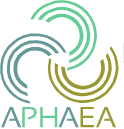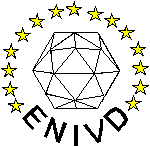This page provides details and links to other related FP7 Projects PALE-Blu is working alongside.
European Environment and Epidemiology Network (E3): 21st Century Surveillance
 ECDC is continually developing the European Environment and Epidemiology Network (E3) that links climatic/environmental and infectious disease data in order to strengthen European capacity in forecasting, monitoring and responding to the threats posed by new and emerging diseases.
ECDC is continually developing the European Environment and Epidemiology Network (E3) that links climatic/environmental and infectious disease data in order to strengthen European capacity in forecasting, monitoring and responding to the threats posed by new and emerging diseases.
The E3 network connectc epidemic intelligence and infectious disease surveillance data (currently housed at ECDC) with meteorological variables, entomological data, water quality records, air quality measures, remote sensing information, geology, population density and many other information sources. Through integrating and synthesizing these data sets, disease surveillance systems would be able to incorporate and analyse environmental precursors to disease pandemics, thus preparing public health to meet the challenges of our time.
As part of ECDC's E3 project they committed funds to ensure the continuing maintenance and updating of the FP6 EDEN Project Data site beyond the end of the research project itself. These funds ensured the site continued for over a year untill it was superseded by this current EDENext Data Portal (Funded as part of the FP7 funded EDENext project). This commitment by ECDC ensured that access to a wealth of epidemiological and environmental data for Europe was continued to be made available to the scientific and wider community, where otherwise it would have been taken offline.
APHAEA - harmonised Approaches in monitoring wildlife Population Health, And Ecology and Abundance
 The EMIDA ERA-NET (coordination of European Research on Emerging and Major Infectious Diseases of production Animals) (http://www.emida-era.net) project “harmonised Approaches in monitoring wildlife Population Health, And Ecology and Abundance” (APHAEA) aims at establishing a European wildlife disease surveillance network that is capable of providing reliable estimates of abundance of wildlife species and of pathogen distribution in key wildlife species.
The EMIDA ERA-NET (coordination of European Research on Emerging and Major Infectious Diseases of production Animals) (http://www.emida-era.net) project “harmonised Approaches in monitoring wildlife Population Health, And Ecology and Abundance” (APHAEA) aims at establishing a European wildlife disease surveillance network that is capable of providing reliable estimates of abundance of wildlife species and of pathogen distribution in key wildlife species.
EMPERIE: European Management Platform for Emerging and Re-emerging Infectious disease Entities
The mission of EMPERIE is to contribute to effectively countering the potential public health threat caused by new and emerging infectious diseases in Europe, by establishing a powerful network capable of structural and systematic prediction, identification, modelling and surveillance of infectious diseases health threats and pathogens. In pursuit of this mission EMPERIE will establish a network of centres of excellence combining the expertise, techniques and resources necessary for effectively countering (re)-emerging infectious diseases.
The European Network for Diagnostics of "Imported" Viral Diseases (ENIVD)
 Through Ebola epidemics in Zaire and Gabon, introduction of West-Nile virus into the Americas, SARS, Chikungunya, and Avian Influenza over the past years, we all became aware that dangerous infections could be imported into Europe in a very short time. Because of such emerging problems and due to the great number of viral pathogens it is necessary to establish a European network of collaboration in this field. The improvement of diagnostics of these "imported" and emerging virus infections is the most important step in detecting the pathogens and dealing with them. Therefore a European collaboration in the area of diagnostics of these virus infections is necessary. The ENIVD is a network founded in 1995 with funding from the European Community and is now (partly) funded by ECDC. It started with 5 members from 3 countries and has grown to a size of to date 57 member institutions from 28 European countries. In annual meetings scientists from laboratories working in the field of diagnostics of "imported" viral diseases build up a network and have worked out objectives to be addressed in this collaboration:
Through Ebola epidemics in Zaire and Gabon, introduction of West-Nile virus into the Americas, SARS, Chikungunya, and Avian Influenza over the past years, we all became aware that dangerous infections could be imported into Europe in a very short time. Because of such emerging problems and due to the great number of viral pathogens it is necessary to establish a European network of collaboration in this field. The improvement of diagnostics of these "imported" and emerging virus infections is the most important step in detecting the pathogens and dealing with them. Therefore a European collaboration in the area of diagnostics of these virus infections is necessary. The ENIVD is a network founded in 1995 with funding from the European Community and is now (partly) funded by ECDC. It started with 5 members from 3 countries and has grown to a size of to date 57 member institutions from 28 European countries. In annual meetings scientists from laboratories working in the field of diagnostics of "imported" viral diseases build up a network and have worked out objectives to be addressed in this collaboration:
- Maintain a network of European laboratories working on diagnostic of "imported", rare and emerging viral infections
- Identify relevant viral infections and standard assays and co-ordinate early response activities
- Work out recommendations for standardisation, bio-safety requirements, and quality control
- Optimise limited resources by exchanging reagents, methodologies, and expertise
- Encourage regular contact (meetings, trainings) within the network, with other networks and with organisations such as ECDC, WHO, and CDC
In 2008 the ENIVD started a strong alliance with the ECDC on the program: "Establishment of a Collaborative Network of European Laboratories for Outbreak Assistance and Support" and developed the additional project "The ENIVD Collaborative Laboratory Response Network (ENIVD-CLRN)". This task is funded by ECDC, the main network is kept going by the members own contributions.
Further details can be found at www.enivd.org
Healthy Futures
 Health, environmental change and adaptive capacity mapping, examining & anticipating future risks of water-related vector-borne diseases in eastern Africa
Health, environmental change and adaptive capacity mapping, examining & anticipating future risks of water-related vector-borne diseases in eastern AfricaThe HEALTHY FUTURES project is motivated by concern for the health impacts of environmental changes. It aims to respond to this concern through construction of a disease risk mapping system for three water-related, high-impact VBDs (malaria, Rift Valley fever and schistosomiasis) in eastern Africa, taking into account environmental/climatic trends and changes in socio-economic conditions to predict future risk.
IDAMS: International Research Consortium on Dengue Risk Assessment, Management and Surveillance
The overall concept of this research project is to assemble a consortium of international experts working together to develop new and innovative tools to be applied to the control of dengue in a global context. The core of the application focuses on parallel strategies aimed at:
- improving diagnosis and clinical management of dengue through two linked work packages designed a) to identify readily available clinical and laboratory parameters and/or viral and immunological markers, that differentiate between dengue and other common febrile illness within 3 days of fever onset, and b) to identify any of the available markers that are predictive of the likelihood of evolving to a more severe disease course
- assessing the risk of dengue spread though linked work packages focused on a) mapping and modelling techniques to define the current extent of dengue disease globally and to evaluate possible scenarios of spread or risk to previously uninfected regions in the future, and b) developing effective and affordable early warning and outbreak response systems.
MAP: Malaria Atlas Project

The Malaria Atlas Project brings together researchers based around the world with expertise in a wide range of disciplines from public health to mathematics, geography and epidemiology. We work together to generate new and innovative methods of mapping malaria risk. Ultimately our goal is to produce a comprehensive range of maps and estimates that will support effective planning of malaria control at national and international scales.
Quantifying Weather and Climate Impacts on Health in Developing Countries
Our research focuses on climate and disease in Senegal, Ghana and Malawi and aims to give decision makers the necessary time to deploy intervention methods to help prevent large scale spread of diseases such as Rift Valley Fever and malaria.
SILVER (Small-molecule Inhibitor Leads Versus Emerging and neglected RNA viruses) project
RNA virus infections kill millions of humans annually, largely due to the lack of suitable vaccines and drugs to control them. The SILVER (Small-molecule Inhibitor Leads Versus Emerging and neglected RNA viruses) project is a global consortium arising from the coordination of Europe’s and Asia’s leading molecular virologists, structural biologists, medicinal chemists and bioinformaticians. The ultimate aim of SILVER is to generate a state-of-the-art drug design programme to face new and emerging diseases caused by RNA viruses.
VECTORIE - Vector-borne Risks for Europe: Risk assessment and control of West Nile and Chikungunya virus
VECTORIE is an acronym for Vector-borne Risks for Europe: Risk assessment and control of West Nile and Chikungunya virus and is a small/medium-scale focused research project funded by the European Commission under the Seventh Framework Programme (FP7)The ultimate impact of projects under this program is to enhance Europe’s preparedness for vector-borne emerging diseases through:The creation of an integrated research capacity on vector-borne emerging diseases in Europe, uniting researchers from different fields; The contribution towards improved ways to monitor spread, diagnose, prevent, control and treat vector-borne diseases in Europe.
VECTORNET
A European network for sharing data on the geographic distribution of arthropod vectors, transmitting human and animal disease agents (OC/EFSA/AHAW/2013/02). Started in May 2014 for 4 years, collaboration between ECDC and EFSA and involving a continuation of the work started by VBORNet in assembling and validating known distributions of and surveillance activities for a wide range of disease vectors in Europe and its neighbours. Vectornet will also use model based gap analyses to target extensive field surveys to fill the gaps in current knowledge.
West Nile Integrated Shield Project: Epidemiology, Diagnosis and Prevention of West Nile Virus in Europe
The world is facing a variety of viral infections of high pathogenic potential. These are either novel or formerly only endemic in specific areas of the world. It is intrinsic to such emerging diseases that actions to prevent and fight them must be taken while the number of infections is still relatively low and geographically restricted. Therefore, research efforts are required well before large outbreaks occur. In addition, effective surveillance networks for a given emerging disease must be established in time. Only with tools for treatment and control (such as vaccines) it will be possible to avoid major uncontrolled outbreaks. This project aims at the development of these tools for the control and prevention of one of the most threatening vector-borne emerging diseases, West Nile Fever, caused by West Nile Virus (WNV), which has recently spread through North America and is becoming a serious threat in Europe. Although the viral strains are similar in America and Europe, different conditions for a WNV epidemic have to be taken into account, like insect vectors, reservoir hosts (birds) and their endemic virus populations plus specialities of European climate and geography.





